Written by Joel Sauer
When we purchased our “new” home earlier this year, it had sat empty for nearly five years. Unfortunately one of the casualties of this vacancy was the hot-water radiator heaters. Being made of cast iron and filled with water, when the house froze during the winters, the ice broke all the seals between the ribs. Apparently you can’t fix these so we were left with a choice: replace the old radiators with a modern hot-water system, or upgrade to a forced-air system that could include air conditioning. After much deliberation (8 seconds) we chose the latter.
I should note that the modern radiators are frankly quite ugly and just wouldn’t fit the house. So we didn’t base our decision solely on the creature-comfort of AC. Forced air systems are also more efficient and therefore ecological. At least that’s our belief and we’re sticking with it!!
As near as we can tell based on repairs to the hard wood floors and the way the old radiators were placed and plumbed, the house was probably originally some other heat system than hot water, perhaps gravity fed (since heat rises). We know for sure it was a coal fired system, as the old coal chute still exists in the basement, along with the squared-off bin to hold it. I even found some chunks of coal still left lurking in the corners and cracks around the chute.
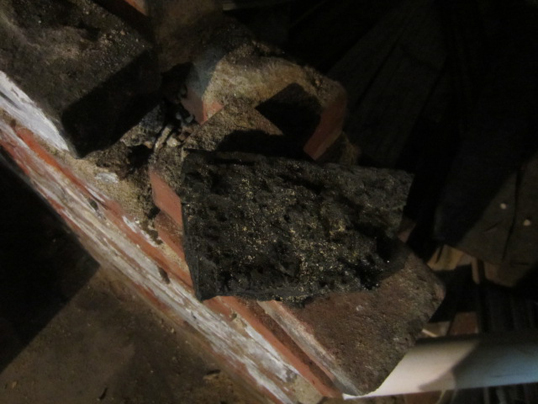
Anyway, with our decision to move to forced-air, we had to find places for all the ducts and cold air returns. As you have already read, this is what necessitated all the holes in the walls, ceilings and floors. It also meant we had to remove and recycle all the old radiators. No small task indeed! The videos here and here show the process of breaking them apart so they can be removed. Most mortals (save Leith – more on that later) find the intact units too heavy to lift and remove. Each rib (those individual sections you see laying in the pile in the pics below this) are still surprisingly heavy. I’d tell you how much each weighed, but by the time we got back to the house the next day, they were all gone. A few pics of the piles of radiator ribs.
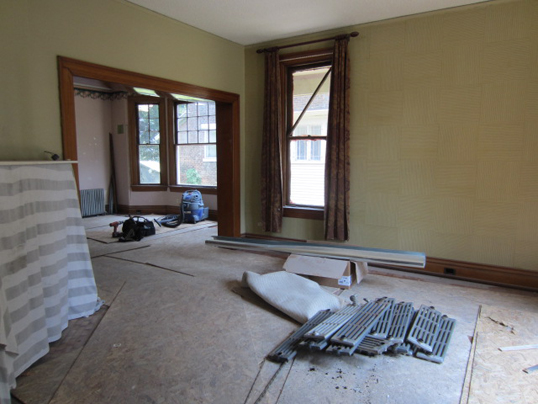
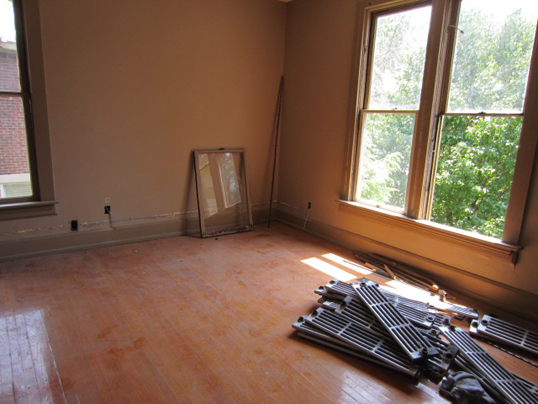
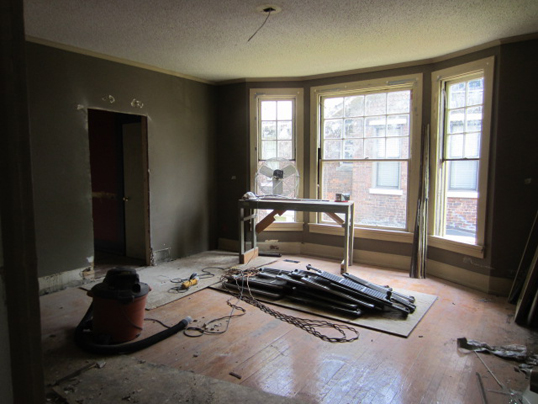
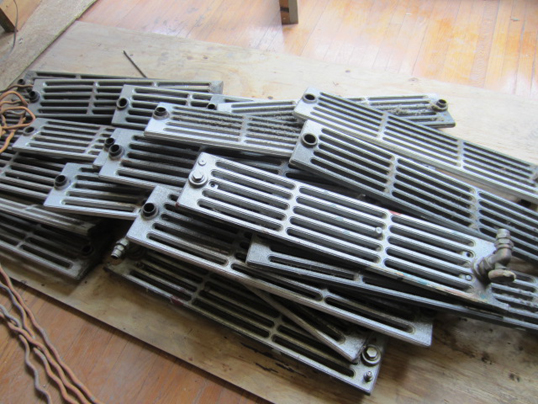
So here’s the story, nay legend, on Leith. He was taking apart our upstairs bathroom and had to remove the radiator. It wasn’t a huge one, but was probably 6 – 8 ribs large. Quite heavy I’m sure. To add to the lore, he had already removed the sub-floor so was standing on bare joists when he hefted up the radiator and was making his way to the door. It so happened that our plumbing guy, Sean, was walking by as he got there. Leith called out, “Hey, can you take this from me?” Seeing that Leith seemed to be holding it without difficulty Sean thought, “Sure”. When the handoff occurred the radiator fell to the floor with such force it almost ended up in the basement! Sean looked at Leith in wonder and asked, “What are you?!?”
Later that same day Leith pulled out our cast iron tub and single-handedly moved it out and down the hall to a back bedroom for storage. His legend was cemented.
One more interesting tidbit on radiators. Apparently those who could afford them were so proud of their new technology they made no effort to hide the pipes. They ran up walls, around corners and everywhere in a very visible way. A hot-water trophy, as it were. Below are a few pics of these external pipes.
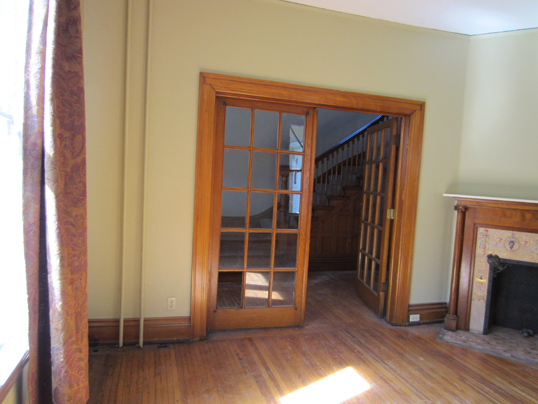
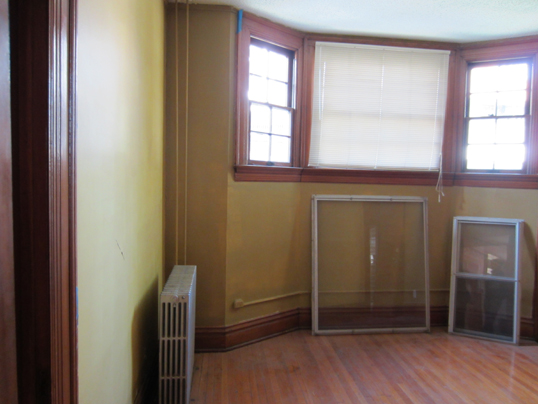

So now we have lovely ducts and air vents tunneling through our walls in place of radiators and external pipes. Progress!








